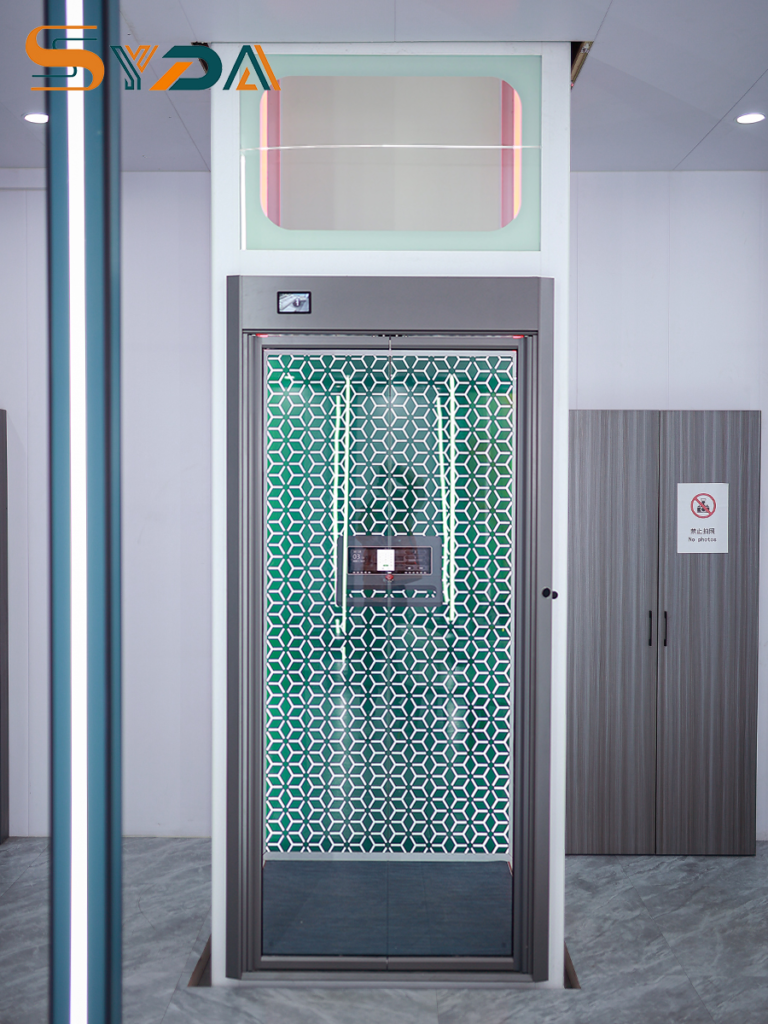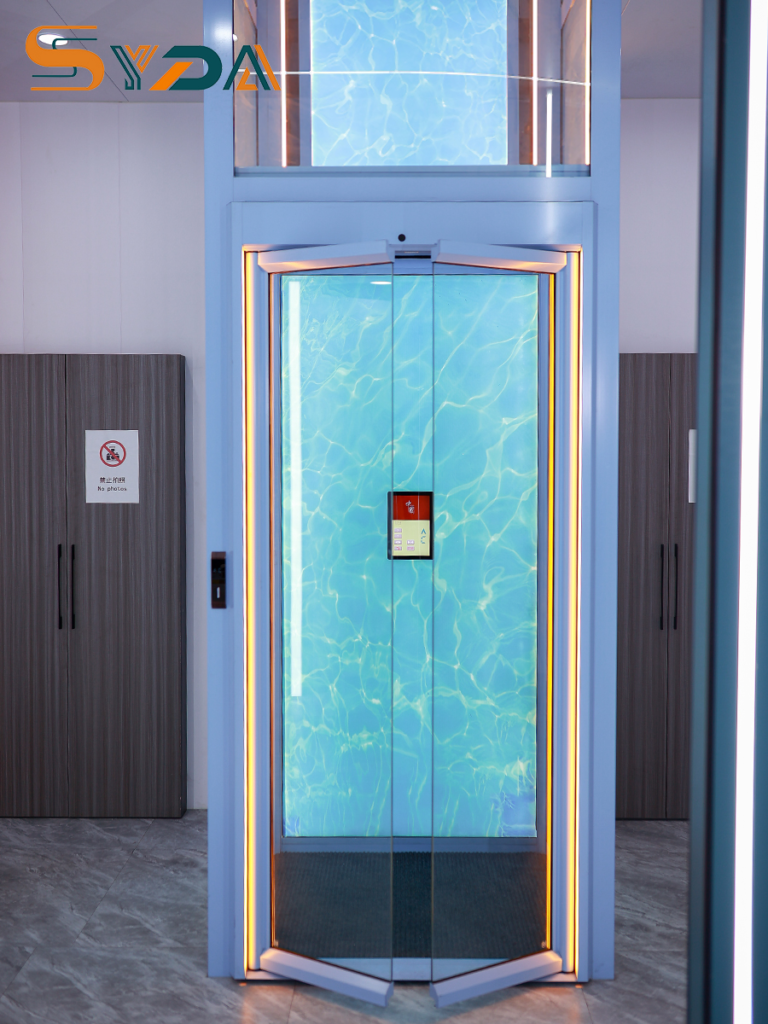The glass elevator, as an iconic element of modern architecture and luxury commercial spaces, is redefining global vertical mobility through advancements in materials science and smart technologies. From the observation elevators of Dubai’s Burj Khalifa to the transparent cabins of Shanghai Tower, its aesthetic appeal and functional innovations are driving the industry toward sustainability and intelligence.
Technological Innovation: Structural Integrity to Smart Interaction
Breakthroughs in glass elevators focus on high-strength materials and intelligent control systems. According to the 2025 Global Glass Products Report, ultra-clear, laminated, and electrochromic glass dominate elevator design, offering 300% higher impact resistance and over 91% light transmittance. For instance, SCHOTT’s Xensation® series, enhanced by ion exchange technology, achieves 9H hardness and is deployed in Tokyo Skytree’s observation elevators.
Smart interaction technologies elevate user experience. Otis’s Compass® 360 system integrates biometrics and voice control, allowing users to select floors via gestures or commands while switching cabin glass between transparent and opaque modes for privacy. IoT-enabled elevators monitor load, energy consumption, and maintenance needs in real-time, reducing predictive failure rates by 40%.

Regional Dynamics: Demand-Driven Adaptation
Global glass elevator markets exhibit distinct priorities
Europe: Sustainability-led standards prevail. The EU’s EPBD mandates that 50% of new elevators use energy-efficient glass by 2030, spurring innovations like KONE’s SolarLift, which feeds 20% of elevator energy back to the grid.
North America: High-end commercial and healthcare needs drive innovation. New York’s One Vanderbilt features AR navigation via cabin glass projections, while hospitals adopt antimicrobial coatings to reduce infection risks.
Asia-Pacific: Skyscrapers and urbanization demand efficiency. Shenzhen’s Ping An Finance Center uses AI to optimize elevator dispatch, boosting peak-hour capacity by 35%; Mumbai’s “Transparent Community Elevators” employ cost-effective laminated glass for slum areas.

Sustainability: Lifecycle Management and Carbon Reduction
Carbon neutrality goals prioritize eco-performance. Elevators with recycled aluminum frames and Low-E coatings cut lifecycle emissions by 45%. Saint-Gobain’s “Glass Circularity Program” aims to recycle 90% of retired elevator glass by 2030.
Emerging markets showcase ingenuity: Nairobi’s solar-powered elevators serve 500 daily users off-grid, reducing diesel use by 70%.

Future Trends: Digital Twins and Cross-Industry Synergy
Glass elevators are evolving into data hubs. Microsoft and Schindler’s Digital Twin simulates stress under extreme weather, cutting maintenance costs by 18%. Singapore’s Marina Bay Sands links elevators to security systems via fingerprint-recognition glass surfaces.
Future challenges center on standardization and user experience:
Security & Privacy: A 2024 Dubai hotel hack accelerated quantum encryption adoption;
Cost & Accessibility: Smart glass elevators cost 30% more, necessitating modular designs for smaller projects.
The glass elevator’s global evolution symbolizes both engineering triumphs and humanity’s quest for aesthetic-functional harmony. From Europe’s circular economy to Africa’s off-grid solutions, its trajectory underscores vertical mobility’s role as a linchpin in sustainable urbanization.





